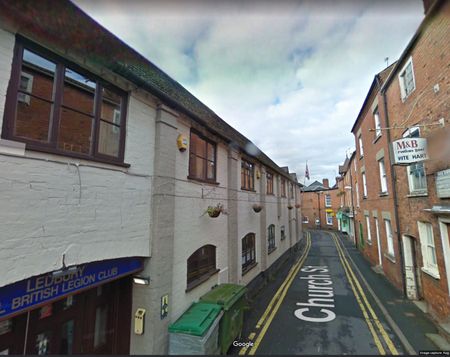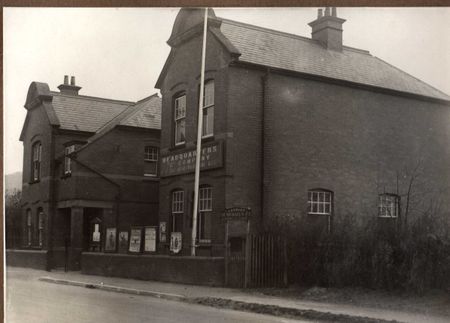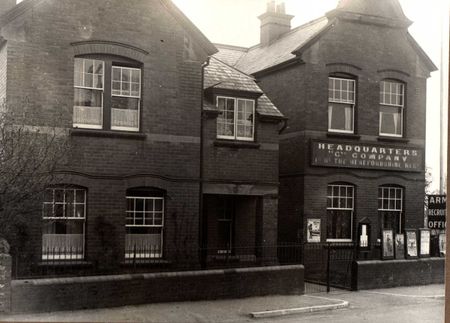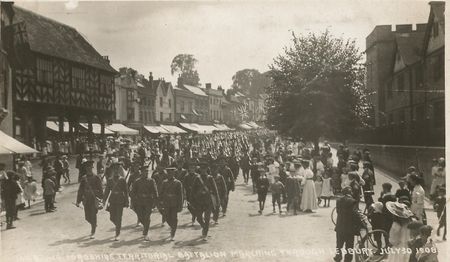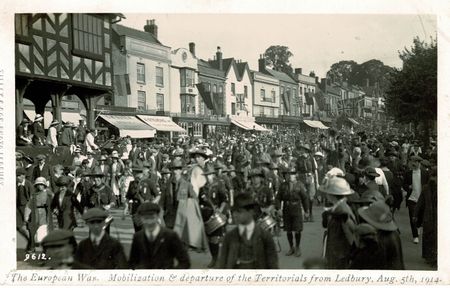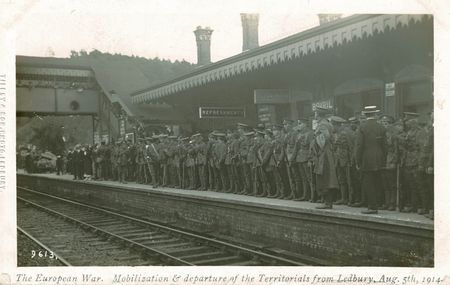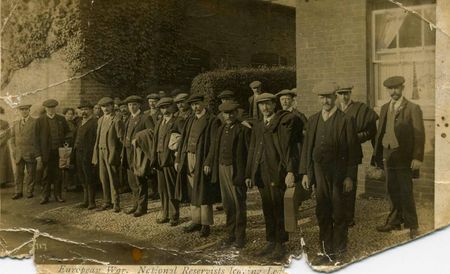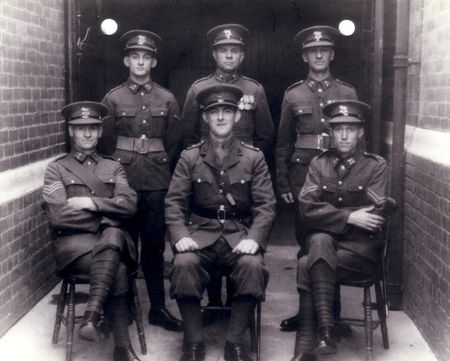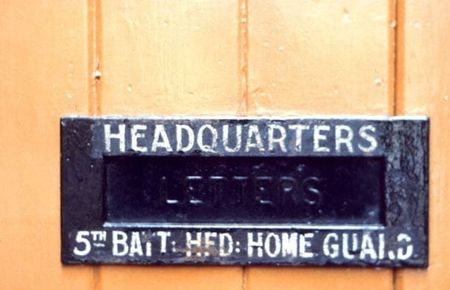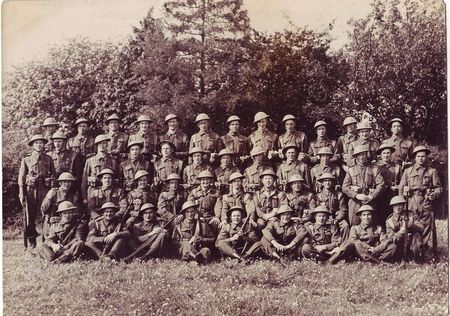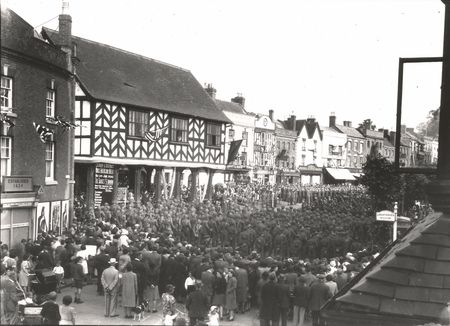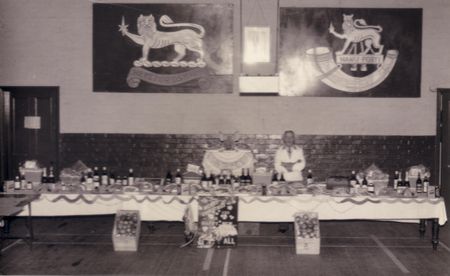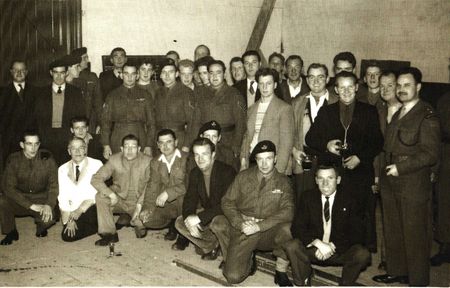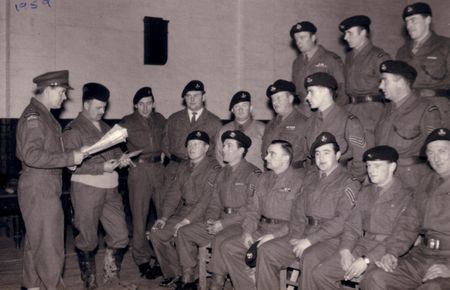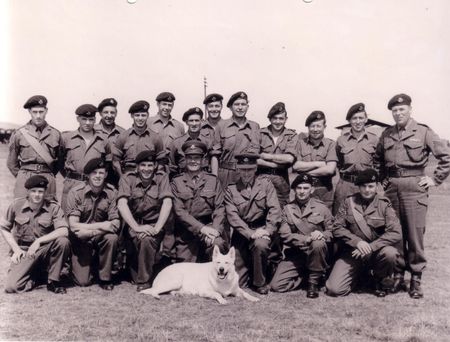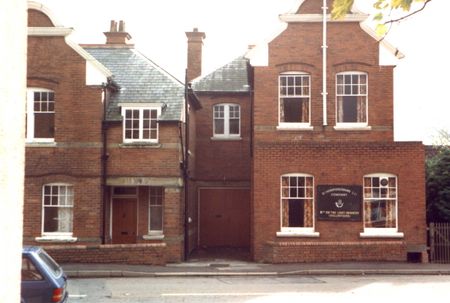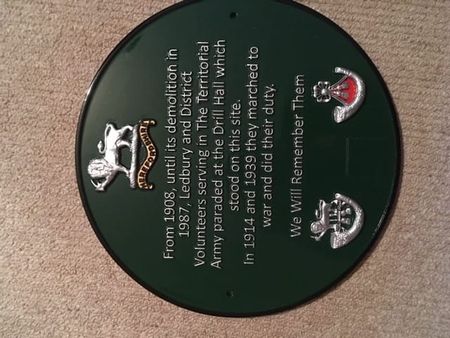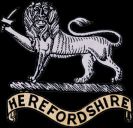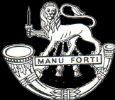
Ledbury Drill Hall
New Street Ledbury
The Drill Hall
The Drill Hall in New Street Ledbury was built shortly after the Reserve Army reforms of 1908. These reforms saw the creation of the Territorial Force and the Herefordshire Regiment.
Prior to 1908 the Reserve forces consisted of the Militia, the Yeomanry and the Rifle Volunteers; they were generally long established and locally organised units of varying efficiency and were no longer considered ‘fit for purpose’. The 1908 (Haldane) reforms disbanded these organisations and created the Territorial Force (TF) under a uniformed structure and organisation. The organisation mirrored that of the Regular Army with infantry, cavalry, artillery and supporting arms (Royal Army Medical Corps, Royal Engineers, Army Service Corps etc).
The Herefordshire Regiment was an Infantry Regiment, it was unusual in that it had no Regular battalion. It was administered by the Kings Shropshire Light Infantry (KSLI).
The Rifle Volunteers in Ledbury had paraded in Church Street - the building is now the Royal British Legion Club, it was also, at some time the town’s fire station.
The Drill Hall in New Street consisted of a large hall, an indoor range, offices and stores and a club room. There was also a house which was provided for the PSI (Permanent Staff Instructor). The PSI was a regular Army senior non commissioned officer (SNCO) (most likely a Colour Sergeant (CSgt)), who was attached to the unit for full time employment and was responsible for administration, stores support and training. The PSI generally came from the KSLI.
The Battalions first annual camp in 1908 was a recruiting march around the county. On 30 July they marched through Ledbury before camping overnight at Bosbury. Luke Tilley took several photographs of the parade and some of these are produced below.
In 1914 on the outbreak of war the Ledbury Company (C Company) of the Herefordshire Regiment was mobilised and assembled at the Drill Hall, to collect equipment before marching through the town to the railway station to travel to Hereford and join with the rest of the Battalion before moving to their war station in Pembroke Dock; again Luke Tilley took photographs.
The Battalion then fought in Gallipoli (Aug - Dec 1915), The Middle East (Dec 1915 - Jul 1918) and the Western Front (Jul - Nov 1918); the Battalion then became part of the Army of Occupation in the Rhineland.
During the First World War the Drill Hall became a central point for military activities in the town including:
- A recruiting centre - immediately after the outbreak of war hundreds of young men rushed to join up.
- An information/welfare centre - The few Permanent Staff (PS) left at the Drill Hall acted as a link between the Battalion and families. These PS would also supervise/administer soldiers on leave or recuperating from wounds/sickness.
- A reporting office for National Reservist (conscripts) when they were ‘called up’, They formed up at the Drill Hall before leaving for a training unit.
- A training centre for the Ledbury unit of the Herefordshire Volunteer Battalion. This unit was formed for local defence in the case of an invasion. Later in the war it was used to ‘pre-train’ individuals prior to joining the Regular Army. Individuals who applied for exemption from conscription could be required to join the Volunteer Battalion.
After the First World War the TF was disbanded as the army reorganised on a peacetime basis, but in 1920 was reconstituted as The Territorial Army (TA). This saw the re-establishment of C Company The Herefordshire Regiment at Ledbury.
The inter war years were hard on the TA (as they were on the Regular Forces) and in a long period of defence cuts the TA was an easy target and suffered from lack of money. However they continued to recruit and maintain a basic strength, holding their annual camps (which continued to be a draw for many men, promising a fortnight’s full army pay, good army food and the adventure of military training in the open - the Herefordshire Regiment often camped at the ‘sea side’ - Isle of Man, Porthcawl, Tenby). The Club became a key element of the unit’s social life and darts, cribbage and skittles teams played in the town’s leagues.
As the TA was ‘mechanised’ garages were established at the ‘bottom’ of Albert Road; this later became (and remains) the site of the Ledbury Detachment of the Army Cadet Force.
As international tensions increased with the re-militarisation of Germany and the threat of war, the TA was reinvigorated. The Bounty and travelling expenses were increased and more allowances paid. By the summer of 1938, buoyed by new recruits, the TA was bigger than at any time after 1920. They were even beginning to see new equipment and in 1939 the TA was doubled in size. Each TA unit split in 2 and formed a mirror unit; for the Herefordshire Regiment this meant the formation of the 2nd Battalion and the Ledbury company became Y Company of the 2nd Battalion with a sub unit at Colwall. The battalion distribution was:
\ 1st Battalion 2nd Battalion
\ A Coy – Hereford W Coy – Hereford
\ B Coy – Kington X Coy – Ross
\ C Coy – Leominster Y Coy – Ledbury
\ D Coy – Leominster Z Coy - Bromyard
The 1939 annual camp was a ‘back to back’ camp at Locking near Weston Super Mare, each battalion spent 2 weeks under canvas and the 2nd Battalion were ‘in camp’ when war was declared on 3 September.
The 1st Battalion was part of 53 Division and after some time in UK moved to Northern Ireland, before joining 11 Armoured Division and landing over the beaches of Normandy on D+6 (13 Jun 1944) and fighting through France and the Low Countries and into Germany.
The 2nd Battalion was allocated to Home Defence duties and did not serve overseas; however many individuals volunteered (or were transferred) to other units as reinforcements or to form an experienced cadre for newly formed units in both UK and overseas.
During the Second World War the Drill Hall again became a central point for military activities in the town including:
- A recruiting centre
- An information/welfare centre - The few Permanent Staff (PS) left at the Drill Hall acted as a link between the Battalion and families. These PS would also supervise/administers soldiers on leave or recuperating from wounds/sickness.
- A central point for local military activity and coordination of locally based military forces of all nations.
- The Headquarters of the Local Defence Volunteers/Home Guard. The Home Guard was formed in 1940 and during the war over 1.5 million men served in it. Herefordshire had 6 Battalions of Home Guard with HQs at:
1 Bn - Leominster
2 Bn - Bromyard
3 Bn - Hereford City
4 Bn - Hereford Rural
5 Bn - Ledbury
\ 6 Bn - Harewood End
When the Home Guard stood down in December 1944 the strength of 5 Battalion was 975 men, and there were over 8,000 ‘Home Guardsmen’ in the county.
Key to the Ledbury Home Guard tasks were guards on the railway tunnel and viaduct. There was an air observation post in ‘Churchill’s meadow’, and Vehicle Check Points were regular established on the town’s approach roads.
- A social centre with regular dances being held where many local men and women met those who were temporarily in the area - soldiers & ATS, airmen and WAAFs, Land Army girls, overseas troops including later Americans.
The TA was eventually demobilised in 1948, but already the Cold War had started. The TA was a key component of the country’s defence forces. TA soldiers were held at various degrees of readiness to meet any potential threat and TA soldiers regularly exercised in BAOR (British Army of The Rhine) in Germany.
Forces were reorganised onto a ‘peace’ footing and a reorganisation of the TA took place. Originally the TA in Herefordshire had been destined to be an artillery unit, but after considerable lobbying it remained infantry and was retitled The Herefordshire Light Infantry - the only TA unit to be titled Light Infantry.
National Service remained in place until 1961 and National servicemen were obliged to parade with the TA after their period of full time service (either 18 months or between 1950-53 (The Korean War) for 2 years) for a period of 4 years.
Ledbury Drill Hall saw many of these ex-National Service men parade.
During the post war period the Drill Hall again became a key part of the social life of the town, with the TA teams taking part in most town pub games leagues, hosting dances and boxing matches, and being used as a wet weather location for events such as the Church Fete.
In 1966 another reorganisation of the TA took place and The Herefordshire Regiment disappeared from the ORBAT (Order of Battle). The TA in Herefordshire was to consist of 2 companies of the Light Infantry (Volunteers) (LI(V)) - C Company of 5 Battalion in Hereford and D Company of 6 Battalion in Ross On Wye with a platoon based in Ledbury.
In March 1981 D Company (Ross and Ledbury) was re-assigned and became part of 5 LI(V) a NATO committed battalion. This saw TA soldiers from Ross and Ledbury exercising in Germany 1982 as a part of Ex Keystone as part of 49 Infantry Brigade and again in 1984 on Ex Lionheart - a massive BAOR reinforcement exercise.
When Ledbury Drill Hall was closed, Ledbury volunteers continued to parade at Ross until it too was closed and soldiers were transferred to C Coy parading in Hereford.
In 2007 the LI and RGJ (Royal Green Jackets) combined to form The Rifles Regiment and the Reserve unit in Hereford is now part of the Rifles Regiment.
No evidence has been found of a ‘full bore’ (.303) 100 yard (or greater distance) rifle range, but a 25 yard full bore ‘zeroing range’ was established in the Conigree Wood quarry on the Worcester Road.
Photographs
- The Rifle Volunteer Corps Drill Hall in Church Street
- The Drill Hall in the 1920s (x2)
- The 1908 Recruiting Parade marches through Ledbury.
- Territorial soldiers parade on the outbreak of the First World, 5 August 1914 (x3).
- National Reservists parade outside the Drill Hall in 1916.
- Ledbury street lining party for 1937 coronation.
- Home Guard - letter box from Drill Hall, Ledbury contingent, Ledbury Parade.
- The Club Steward - Albert Welsh - at the Christmas Social in 1958.
- Club members at a skittles night in the 1950s
- A group of soldiers receive ‘orders’ from Lt Buckley 1959.
- Group photograph Ledbury soldiers 1959
- Ledbury TA soldiers at camp
- The Drill Hall shortly before demolition in 1989.
- Dedication of memorial Plaque on site where the Drill Hall stood - November 2019 (x2)
